In this post: The 5 benefits of thematic learning and why this method works so well for teaching your kids Spanish.
Bilingualism has been on the rise for the past few years and isn’t showing signs of slowing down. With the many benefits of bilingualism, that comes as no surprise.
Among the top 3 languages spoken in the US, Spanish ranks as the second most common. If you’re one of the many parents who want to get in on the bilingual action and teach your kids Spanish as a second language, it’s not too late. Even if you’re not a native Spanish speaker, you can do it!
Perhaps you’re wondering what the best methods are and which resources you can use. Well, that’s where we come in and we are more than happy to help.
Let’s take a closer look at thematic instruction, the benefits of using this method with kids and how you can get started today!
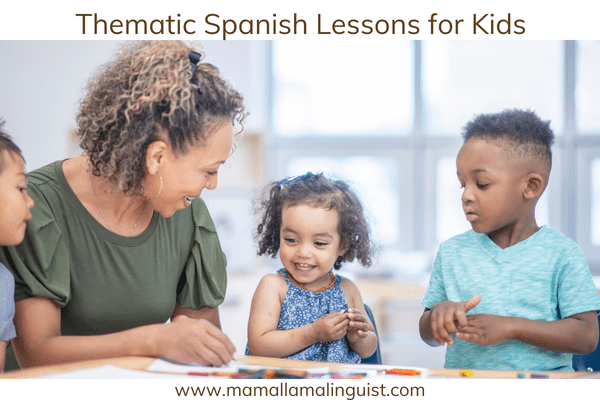
This post may contain affiliate links. As an Amazon associate I earn from qualifying purchases.
What is Thematic Instruction?
Thematic instruction, also referred to as thematic learning, involves structuring curricula around major themes or topics as a way to teach different concepts.
What this means is that instead of teaching skills arbitrarily or individually, this cross-curricula approach studies various disciplines such as math, science and reading through in-depth exploration of the chosen theme.
5 Benefits of Thematic Learning with Kids
- Themes are the most natural way for children to learn
Thematic teaching adopts a holistic approach to learning by using real-world situations and examples surrounding a central theme. Even for young children, this method is relatable and practical.
If you’ve been a parent long enough, or have been around kids for quite some time, then I’m almost certain you have not managed to escape the ‘why phase’. When learning about their surroundings and the way things work, children often reach a stage of questioning why things are the way they are.
It’s as if they have an inherent curiosity and seek to understand how the many aspects of a concept or theme work together. That’s why the holistic method used in the thematic approach remains one of the most natural and effective ways for children to learn.
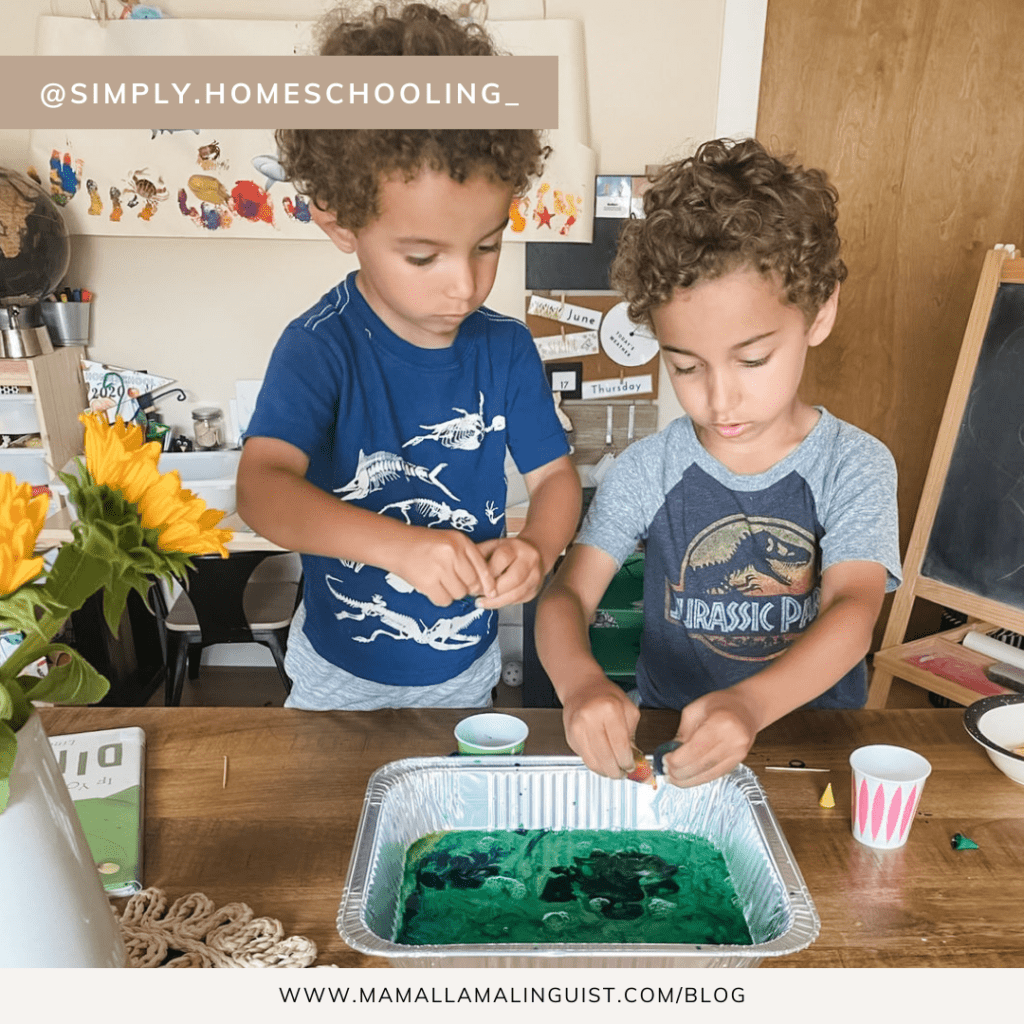
2. More meaningful and joyful learning
A 2018 study examined the effect of the thematic learning model, learning style, and reading ability on the students’ learning outcomes and noted the following:
The theme gives one of the best tools to integrate the content area in a way that makes sense for students and helps them make connections to transfer the knowledge they have learned and apply it in meaningful ways.
Meaningful learning is more enjoyable and helps students achieve greater success by encouraging understanding, active learning techniques and the ability to build on concepts. Among the cognitive benefits this helps develop, problem-solving is one of the most notable.
Even outside more formal learning environments, many game developers and show producers have caught on and are now applying more meaningful techniques that encourage learning among kids.
Within your personal limits for screen time, I’d recommend that you try these apps and tv shows that encourage meaningful language learning.
3. Not rote learning
Rote learning is a technique whereby repetition is used as a way of memorizing concepts. While useful in some instances, this technique can’t always be relied on as the sole way of learning. Simply being able to memorize concepts is not an indication of intelligence and often does not stay in our long-term memory.
If you’ve ever crammed for an exam hours before then you know exactly what I’m talking about.
As a result, it’s often stated that rote learning is not considered to encourage creativity, critical thinking and problem solving among students.
On the other hand, thematic teaching fosters more natural and meaningful learning as mentioned earlier.
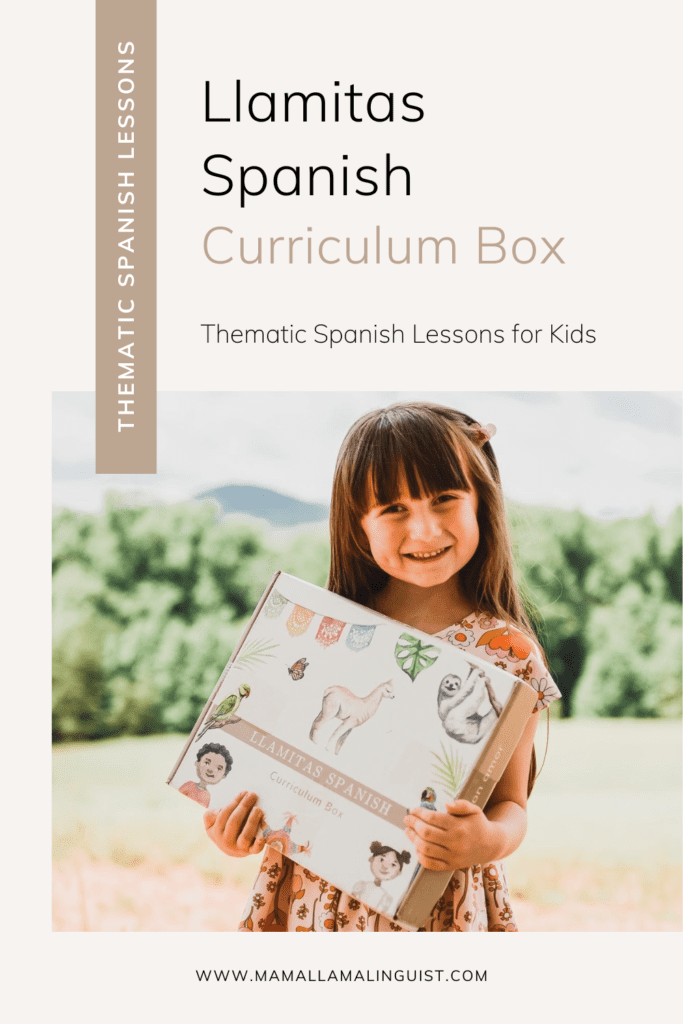
4. Cross-curricula = multi-disciplinary
In thematic teaching, once the overarching theme has been selected then the cross-curricular thematic instruction follows. Teachers tailor their learning objectives across multiple disciplines such as Geography, Science and Math.
Instead of learning individual concepts, this helps kids to gain a better understanding of the relationship between all the subjects. I once heard the concept likened to the idea of ‘moving from islands to a continent’ which I find to be a fitting description.
Research also suggests that the multi-disciplinary approach engages the whole brain through active and hands-on involvement.
5. Supports different learning styles
It’s a reality that we all learn differently. While you can follow general tips for raising a biliterate child, the learning style of one child may not necessarily align with that of another even within the same family and that’s ok.
On the bright side, thematic teaching involving the use of Spanish themes caters to all students. For each unit and theme, the integration of many disciplines such as Math, Science, Art and Music means the use of phonics, equations, games, crafts, songs and more. This wide range of teaching methods supports all the different learning styles.
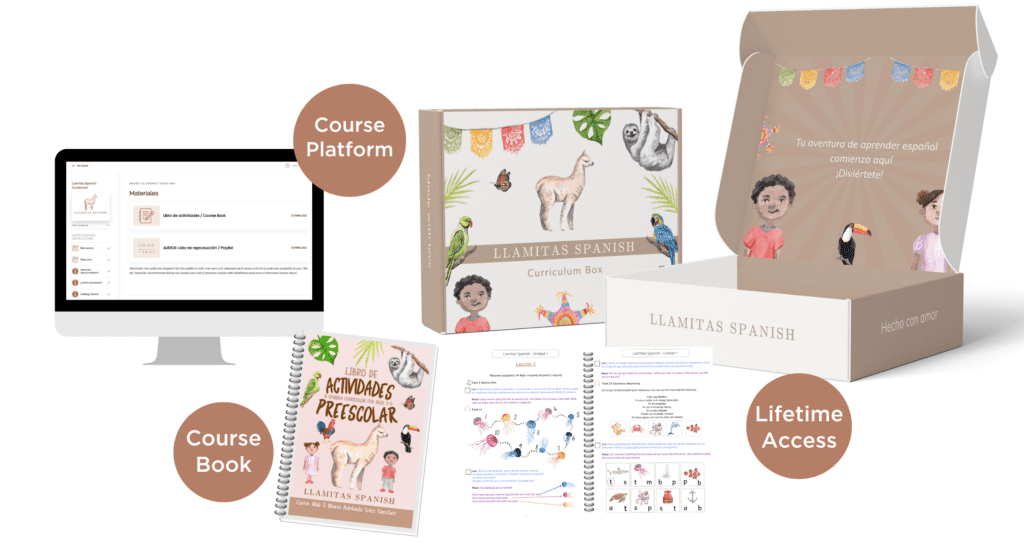
Llamitas Spanish Thematic Lessons
Understanding the many benefits of the thematic method and armed with a love for teaching, we felt it absolutely necessary to use this method to develop our lessons here at Llamitas Spanish.
Our Spanish curriculum offers immersive, thematic lessons that cover a range of early years academics. There’s a total of 12 ‘open & go’ sequential units that help develop skills and build upon each unit as you go through the course of the program.
Some of the topics included are ocean, farm, forest, community helpers and space. Through these authentic themes, your kids are provided with a fun and relatable way to practice phonics, math and early literacy.
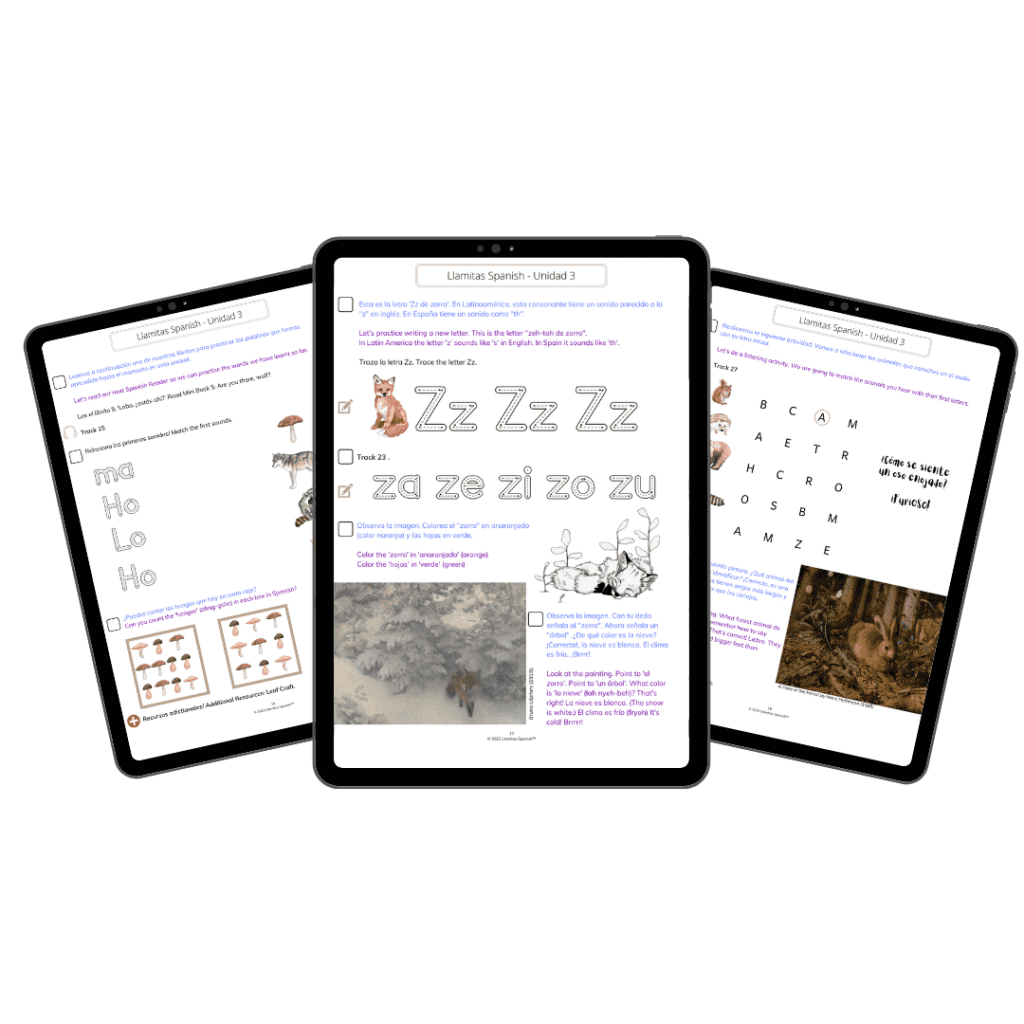
How do you feel about singing along to a nursery rhyme in Spanish? To really stay true to the Hispanic culture, we’ve also included lessons for cultural art appreciation and music.
Sounds overwhelming? Have no fear, the lessons are perfect for both native and heritage speakers AND beginners. The bilingual scripts allow you to facilitate the lessons in the language you feel most comfortable in. (We’ve got you!)
If you have children aged between 3 and 6 years, and you’re interested in these Spanish preschool themes, then be sure to check out our Llamitas Spanish Curriculum. You have the option of going fully digital or getting the printed Curriculum box too.
If you think it’s too late then think again. It’s actually a myth that only young children can become bilingual. So check out the curriculum, enroll now and get started. ¡Buena suerte!
